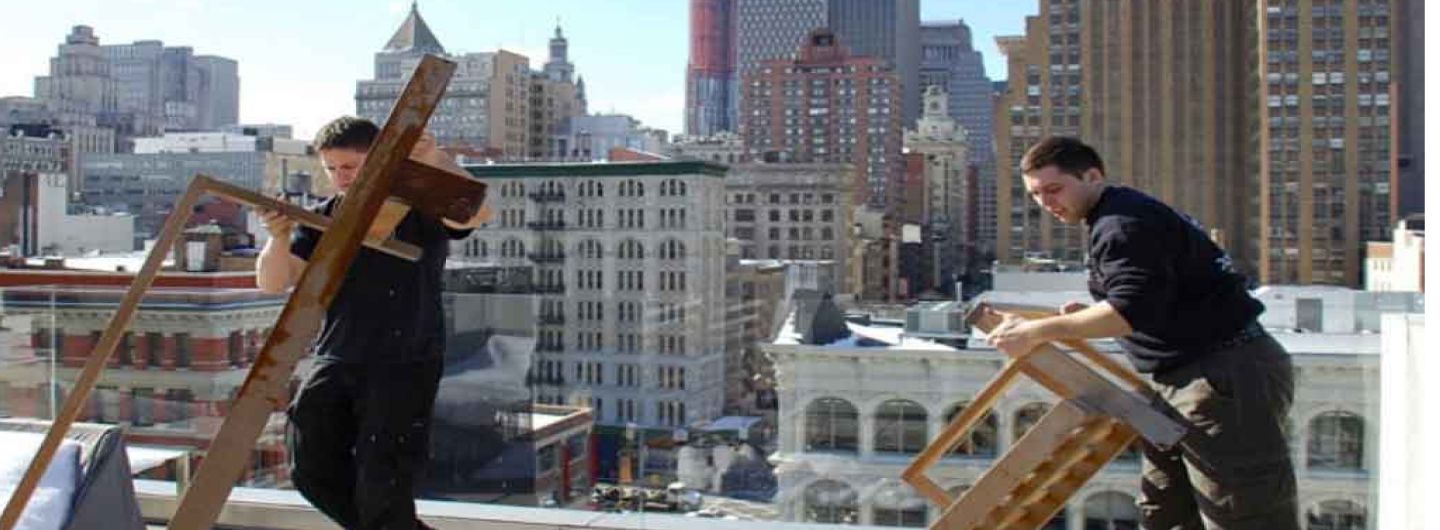Moving can be a daunting task, especially when you’re planning a cross country relocation. Whether you’re moving for a job, family reasons, or simply seeking a change of scenery, there’s a lot to consider. To help you stay organized and ensure a smooth transition, we’ve put together a comprehensive cross country moving checklist. We’ll cover the essential steps you should take before your big move, and we’ll also touch on local, international, commercial, long distance, and student moving. Plus, if you’re one of those interior designers moving to the bustling streets of NYC, or if you’re relocating to or from Chelsea or Westchester, we’ve got specific tips for you too.
The Basics of Cross Country Moving
Before diving into the specifics, let’s go over some universal tips and considerations that apply to anyone planning a cross country move.
1. Create a Moving Binder
Start by creating a dedicated moving binder or digital folder to keep all your important documents, receipts, and notes organized. This will be your go-to resource throughout the moving process.
2. Set a Budget
Moving can be expensive, so it’s crucial to establish a budget early on. Consider all expenses, including packing materials, transportation, lodging, and any unexpected costs.
3. Declutter and Downsize
Moving is the perfect opportunity to declutter your belongings. Go through each room and decide what to keep, donate, or sell. The less you have to move, the easier and cheaper it will be.
4. Research Moving Companies
If you’re not planning a DIY move, start researching moving companies well in advance. Get quotes, read reviews, and choose a reputable company that fits your needs.
5. Notify Important Parties
Inform key parties about your move, including your employer, schools, healthcare providers, and the post office. This will ensure a smooth transition in terms of services and communication.
6. Pack Early
Packing always takes longer than expected. Begin packing non-essential items early and label your boxes clearly. Consider color-coding or numbering them for easy organization.
7. Take Inventory
Create a detailed inventory of your belongings. This will be invaluable for insurance purposes and to ensure everything arrives at your new home.
Now that we’ve covered the basics, let’s dive into specific scenarios.
Local Moving
If you’re planning a local move, within the same city or nearby, your checklist will be a bit different. However, many of the general tips mentioned above still apply. Here’s a brief local moving checklist:
1. Hire Local Movers
Research and hire a reputable local moving company. Local movers are familiar with the area and can navigate the logistics more efficiently.
2. Check Local Regulations
Some cities have restrictions on moving during certain hours or on specific days. Be aware of local regulations and plan your move accordingly.
3. Update Your Address
Update your address with the post office, banks, utility companies, and any other important institutions. Don’t forget to notify friends and family too.
International Moving
International moving is a whole different ballgame. It involves a host of additional considerations and paperwork. Here’s what you need to do:
1. Obtain Necessary Visas and Permits
Research the visa and work permit requirements for your destination country. Ensure that all necessary documents are in order.
2. Research Customs Regulations
Different countries have varying customs regulations and restrictions on what you can bring. Research these thoroughly to avoid any surprises at customs.
3. Vaccinations and Health Checks
Check if there are any required vaccinations or health checks for entry into your new country. Ensure that all family members are up-to-date on vaccinations.
4. Language and Culture
Take the time to learn about the language and culture of your new home. This will help ease the transition and make it easier to communicate with locals.
5. Shipping and Storage
Consider what items you’ll ship, what you’ll store, and what you’ll sell or donate. International shipping can be costly, so choose wisely.
Commercial Moving
Moving a business involves its own set of challenges. Here’s a checklist to guide you through a commercial move:
1. Create a Business Relocation Plan
Plan the move well in advance. Assign tasks to employees, establish a timeline, and communicate the plan clearly to all stakeholders.
2. Update Your Business Information
Notify clients, suppliers, and partners about your upcoming move. Update your business’s address on all official documents, websites, and social media profiles.
3. IT and Data Management
Ensure that your IT systems, data, and files are backed up and securely transferred to the new location. Consider hiring professionals for this critical task.
4. Employee Transition
Support your employees during the transition. Provide clear information about the move, offer assistance with finding housing, and address any concerns they may have.
Long Distance Moving
Long distance moves within the same country often require similar preparations to cross country moves. Here’s a checklist for long distance moving:
1. Plan Your Route
Plan your travel route, especially if you’re driving. Identify rest stops, hotels, and gas stations along the way.
2. Vehicle Maintenance
If you’re using your vehicle for the move, ensure it’s in good condition. Schedule any necessary maintenance or repairs.
3. Pets and Plants
Make arrangements for the safe transport of pets and plants. Some states have regulations regarding the transportation of certain plants and animals.
Student Moving
Moving as a student might not involve as much stuff, but it can still be overwhelming. Here are some tips for a successful student move:
1. Student Housing
Coordinate with your new school or university regarding student housing options. Make housing arrangements well in advance.
2. Packing Light
As a student, you likely don’t have a ton of belongings. Focus on packing the essentials and consider selling or donating items you no longer need.
3. Student Discounts
Many moving companies offer student discounts, so be sure to inquire about these cost-saving options.
Interior Designers Moving to NYC
If you’re an interior designer making the big move to the bustling streets of NYC, here are some specific tips:
1. Networking
NYC is a hub for design professionals. Start networking with local designers and firms to establish connections in your new city.
2. Storage Solutions
Consider the storage needs for your design materials and furniture. NYC apartments can be small, so think about creative storage solutions.
3. Transit Options
Explore the public transportation options available in NYC. You may not need a car, as the city has an extensive subway system and plenty of taxis.
Wrapping Up
Moving, whether cross-country, local, international, commercial, long-distance, or as a student or interior designer, can be a complex process. However, with a well-organized cross country moving checklist and a proactive approach, you can minimize stress and ensure a successful transition. Start early, stay organized, and remember that, no matter where you’re moving, it’s an opportunity for a fresh start and exciting new adventures. Safe travels on your journey to your new home!




